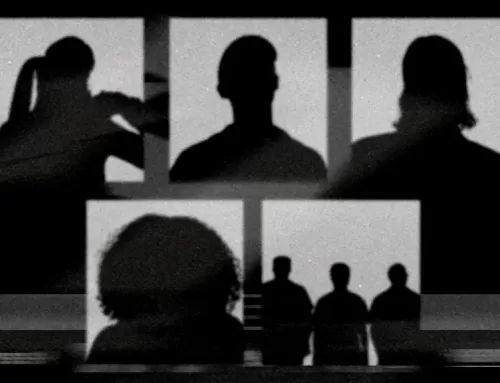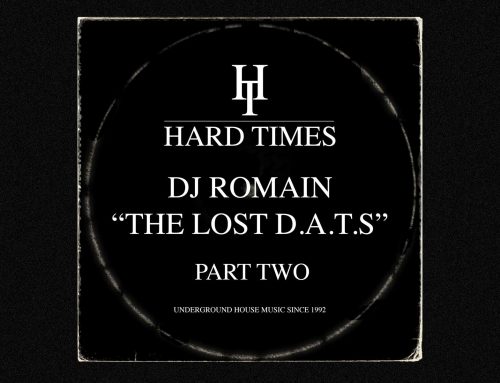
Electronic dance music, or “EDM” as the world has come to know it, has been around for decades. Since 2012, the “umbrella genre” has experienced an economic explosion the likes of which no one could have foreseen in terms of its multi-billion-dollar profitability. Make no mistake, though, that the so-called “EDM boom” was actually set into motion much sooner.
As part and parcel to Daft Punk’s 2006 debut of the Pyramid stage at Coachella, deadmau5’s MTV VMA performance in 2010, and Swedish House Mafia‘s 2011 chart-topping hit, “Save The World,” these were the markers of EDM’s fast-track pervasive presence around the globe. “EDM,” for all intents and purposes, was openly embraced by an increasingly digital society and a new generation of millennial consumers.

Coachella Valley Music & Arts Festival, Indio Valley, CA, April 2006.
Yet, too often has EDM’s oversimplification sidestepped the genre’s original roots and, too often, does this oversimplification leave its true pioneers all but forgotten or estranged, as well as ignored and left in the dust. Many a festival attendee would likely list off names like Calvin Harris or Avicii when asked about the biggest names in dance music, but they’d be missing the mark completely. While such names have ever-so-often enjoyed the spotlight of spearheading a worldwide musical movement, these “poster boys” surely didn’t invent the sound. The birth of “EDM,” as controversial as the acronym has become, is, therefore, being remembered as the genesis for the mass white-washing of dance music culture.
The white-washing of dance music has inevitably led to the erasure of countless talented, innovative black musicians who’ve dedicated their careers, lives, and sometimes even sacrificed their mental health, to the homogenous festival culture that is widely enjoyed presently. These pioneers often did so not in search of fame and fortune, but in pursuit of passion, drive, creativity, and pushing the boundaries of what constitutes music.
When Green Velvet sounded off on Twitter in December 2019, calling out the “EDM” craze for not just forgetting the foundations of house and techno, but for forgetting how the white, straight, male-dominated EDM industry was built on the backs of those of the oppressed class. He even cited countless visionaries who created these spaces: Jesse Saunders, Kevin Saunderson, Lil Louis, Jeff Mills, Marshall Jefferson, Steve Silk Hurley, Farley JackMasterFunk, Juan Atkins, Carl Craig, Frankie Knuckles, Ron Hardy, DJ Pierrie, and Derrick May Larry Heard — all black, all male, some gay.
As the Black Lives Matter movement continues to re-shape global politics and race relations, the dance music industry has staunchly stood up for justice, equality, and freedom in response to the George Floyd protests. As the black experience has reverberated around the world, it’s now more important than ever to listen and learn about the musicians who founded the so-called “EDM” industry — especially in a scene who’s central tenants are built upon inclusivity and respect.
In part one of this series, CE looked at Detroit in the 1980s and the creators of techno, The Belleville Three. The culture of the time was similar to what America is facing now with its growing political unrest, increased police brutality, and heightened racialized tensions. The techno scene, which manifested itself in dark, dingy clubs and the low-lit industrial warehouses, became a safe space for minority identities to unwind, escape, and stay true to themselves.
As techno began to thrive in Detroit, a similar sound was developing just a state over. A cousin to techno, house music was Chicago’s pride and joy among its gay and black communities. As house music shifted from a fridge movement into a multi-billion dollar commercial industry during the EDM-boom of 2012 is where the storyline of erasure begins.
Much like techno, house music was fresh on the heels of the death of disco. House music became essential to the energy of Chicago at the time. Much like jazz in the early twentieth century, the music provided a necessary relief to the era’s political turmoil as well as a safe place for marginalized identities and people of color. The clubs and warehouses were a spot for the outcasts, those with nowhere else to go, and for those who were sick of wearing masks and needed a place to shine.
Positivity and unity were two huge facets of the scene, perhaps even more so in house than in techno, and there was a sizeable musical crossover into the LGBT crowd in particular. Nowadays, house music has ballooned into a mega-genre of sorts that’s stretched across the world, with countless artists, festivals, and labels dedicated to keeping the sound and history alive.
Just look to Disclosure, whose output over the past year or two has been predicated on spotlighting afro-pop styles, including Nigerian artists, Cameroonian artists, Sudanese artists, and 1970s disco throwback tunes. Also look no further than Dillon Francis and Major Lazer, who’ve becomes known for blending reggae with dancehall and moombahton. Nevermind that these groups are all led by white men appropriating long-established sounds into the electronic music lexicon.
From Ron Hardy to House Music’s Beginnings

Before celebrating the men who capitalized on the “EDM craze” writ-large, or before even getting into the house music artists who pioneered those evolutionary beats, it’s important to first recognize the man who made the underground house scene possible: Ron Hardy. While he didn’t release much of his own music, he was a legendary DJ at the time, pioneering incredible, innovative ways to mix and expand music.
Hardy spun in Chicago for decades through the 70s and 80s, starting at a gay night club named The Den, which later turned into a mostly black, gay, all-male club and was renamed “Den One.” Heralded as the spot for the black gay community, it was pivotal in beginning a dance scene in the city that house music could piggyback on. Hardy began performing there a year after The Den’s official renaming and became an instant hit with its regular clubgoers. In the 80s, he played regular sets at another dance club, The Music Box, and continued his DJ legacy for several more years.
House music fanatics all swooned over Hardy’s sets and his ability to make music “stretch” or go “on and on,” a trademark of the house sets people love today. As a gay man himself, he found solace in and later became friends with fellow gay producer Frankie Knuckles. Knuckles’ main club, The Warehouse, was something of a sister club to Den One, and allowed the community to expand further. They shared music, ideas, and commonality as lone gay, black men in the grueling music industry. Knuckles even cites Hardy often as a trademark influence into his eventual tastemaking sound. While Hardy tragically died in 1992, his memory lives on in the minds of those who attended his famed sets, even as they’ve gone to outgrow the scene or become weary of house music’s white-washed overtones.
Frankie Knuckles: The Godfather of House Music
Often called “the Godfather of house music,” Frankie Knuckles was a pivotal figurehead in the music industry and his importance to the evolution of house cannot be understated. Born in 1955, he grew up in New York around a thriving, constantly morphing music culture made up of disco, soul, and rock. He moved to Chicago in the seventies and began playing at several clubs in the city right away. Like Hardy, Knuckles started out as an extremely experimental, underground DJ, searching far and wide for the strangest music to work into his sets. Through set after set, he slowly began to develop his signature house sound. This finally peaked when Derrick May sold him a drum machine in 1983, and not long after Knuckles released his first tracks in 1985.

After years of performing at The Warehouse, a widely known club mecca for the gays, Knuckles’ sets there were so widely renowned that the term “house” came from shortening “warehouse.” This is where the genre was born. His complexly layered style and synthetic beats were already being imitated throughout Chicago and, one year later, house music started to see a surge in England. When artists began to carry the music to all corners of the earth is when Knuckles’ music career took off.
House music continued to grow and expand into the nineties and today. Along the way, numerous incredible black producers have continued to leave their mark on the genre — from Jesse Saunders, who created the first house record label in 1984 and later dropped the first house record the same year, to Stacey “Hotwaxx” Hale, the “Godmother of House Music” and one of the first artists to hear their line of house music hear radio-play.
The sound moved to New York, where the famous Club Kids added zany fashion statements to the culture, before the genre spread across the pond and took up roots in England. Here was a culture that popularized the modern nineties raves that enjoy legendary status in the historical memory, which later led to the overly commercialized “rave” massives many know today. All of this was made possible by a mere handful of black people with a passion for music and a vision for love, who dedicated their lives to advancing the industry in an accessible way.
Music is the great unifier
America is entering into a new civil rights movement in 2020, just as in the days of Woodstock mirrored the political unrest of 1968. As US history repeats itself in the fight for equality and justice, the socio-cultural parallels are impossible to ignore between the creation of the house and techno music scenes back then and the “EDM” scene today.
Yet one thing remains in the EDM scene today: the overwhelming sense of unity purported in many of dance music’s niche circles. It’s been passed through generations of feeling and experiencing music as the great unifier. It’s an emotion that can be seen just as much as felt: in shuffling circles, in trading kandie bracelets, in warm embraces with complete strangers. In times of celebration, just as in times of pain and strife, the unity of music opens the gateway into our own transcendence from material shackles, social intolerance, and political indifference. Music provides a safe space to become free of these weighty constructs that try to bog us down, hold us back, and seek to divide us.
Still, one fact remains critical with fostering up unity: that this foundational ideal not be left on the footsteps of gay night clubs or forgotten in the pages of history. To do so would mean trailblazers like Hardy and Knuckles will have been remembered in vein. It would also push the idea of unity from foundational rave ideal into over-idealism, cynicism, or fatigue. To lose our sense of unity would also mean dance music loses its history, its flavor, and its very underpinning as a marginalized cultural movement.

For equality to be materialized into law and action — be it on the streets of Minneapolis or in Ferguson, Missouri — we must actively deny the white-washing of history. Whether it be in dance music, or Jim Crowe segregation, or the war of drugs, or police brutality, racism will always find a way to adapt, mold, and change itself. We must actively stand together, unified in calling out racism when it threatens our communities and our very own humanity. For music to remain the great unifier, it must do what its always done as an artform: remain focused on peace, love, and a deep appreciation, respect, and support for those who gifted it to the world.
To donate: Coalition for African Americans in Performing Arts, National Association of Negro Musicians, Music by Black Composers.




![Carl Cox says his Ibiza residency at [UNVRS] will be a “whole new world” (DJ Mag)](https://www.myhouseradio.fm/wp-content/uploads/2025/04/carl-cox-1.jpg-500x383.webp)
Leave A Comment
You must be logged in to post a comment.